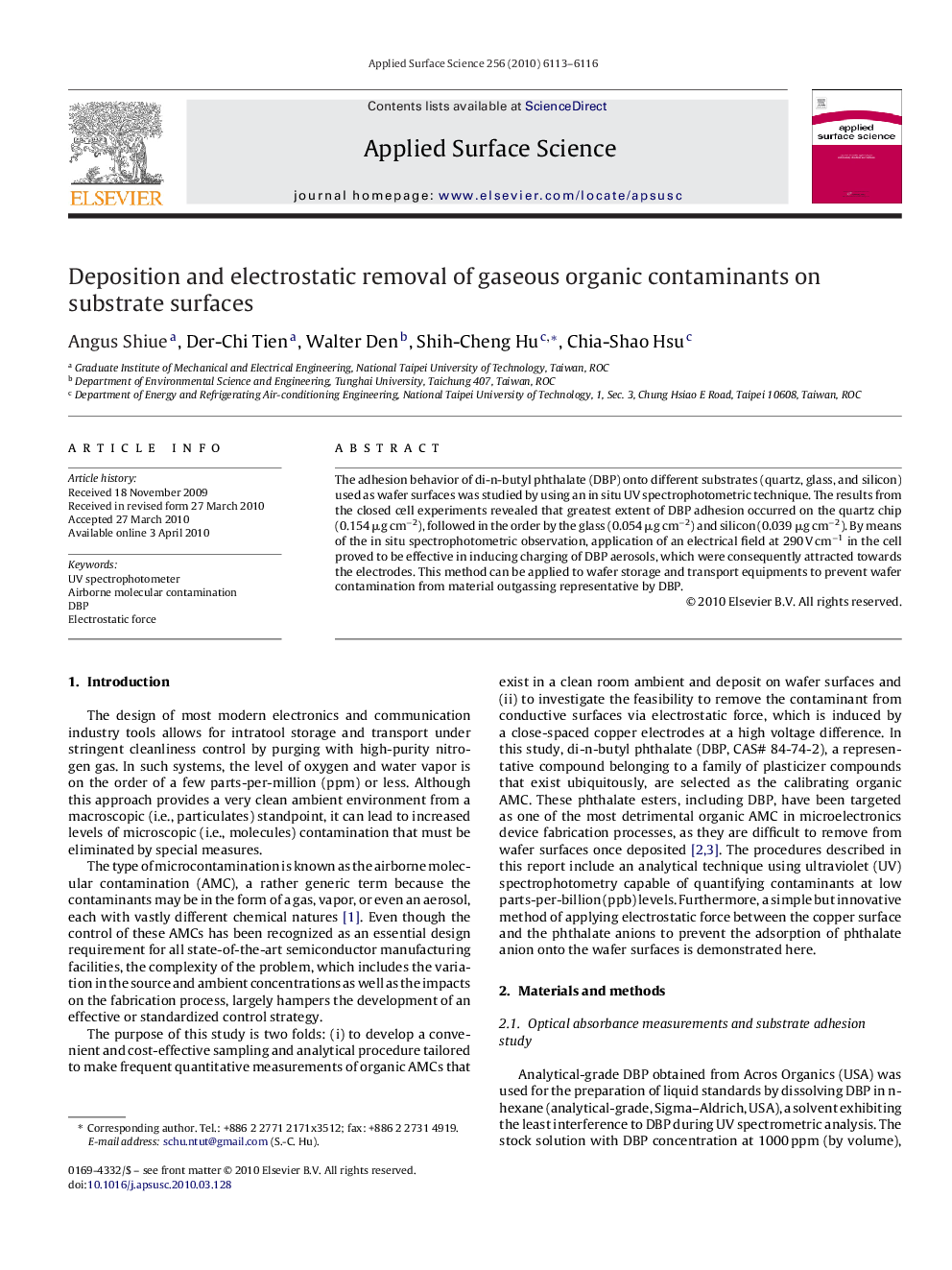| Article ID | Journal | Published Year | Pages | File Type |
|---|---|---|---|---|
| 5357687 | Applied Surface Science | 2010 | 4 Pages |
Abstract
The adhesion behavior of di-n-butyl phthalate (DBP) onto different substrates (quartz, glass, and silicon) used as wafer surfaces was studied by using an in situ UV spectrophotometric technique. The results from the closed cell experiments revealed that greatest extent of DBP adhesion occurred on the quartz chip (0.154 μg cmâ2), followed in the order by the glass (0.054 μg cmâ2) and silicon (0.039 μg cmâ2). By means of the in situ spectrophotometric observation, application of an electrical field at 290 V cmâ1 in the cell proved to be effective in inducing charging of DBP aerosols, which were consequently attracted towards the electrodes. This method can be applied to wafer storage and transport equipments to prevent wafer contamination from material outgassing representative by DBP.
Related Topics
Physical Sciences and Engineering
Chemistry
Physical and Theoretical Chemistry
Authors
Angus Shiue, Der-Chi Tien, Walter Den, Shih-Cheng Hu, Chia-Shao Hsu,
